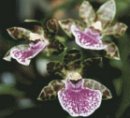 |
| BOT 3015 Sample Exam 1 | |||
| For no. 1--20, match the following by placing the letter representing the best possible answer (from the KEY below)
in the space to the left of each problem. __ 1. coenocytic molds __ 2. kelps __ 3. prokaryotic __ 4. coral reef formation __ 5. methane bacteria __ 6. rusts and smuts __ 7. Cyanobacteria __ 8. Volvox and Spirogyra __ 9. Sargassum and Fucus __ 10. progenitors (fore-runners) of higher plants __ 11. cleistothecium and perithecium __ 12. mycoplasma __ 13. diatoms __ 14. dikaryotic __ 15. ancestral cells to Protistans __ 16. multicellular algae with no flagellated cells __ 17. “red tide” __ 18. morels and ergot __ 19. terms “volva, stalk, cap, annulus” __ 20. Anabaena, Nostoc, and Oscillatoria KEY A. Ascomycota (ascomycetes) B. Basidiomycota (basidiomycetes) C. Zygomycota (zygomycetes) D. Archaea E. Bacteria F. Rhodophyta (red algae) G. Chlorophyta (green algae) H. Phaeophyta (brown algae) J. Dinophyta K. Bacillariophyta ---------------- For no. 21--29, match the following by placing the letter (from the KEY) representing the best possible answer in the space to the left. __ 21. coenocytic filaments with oogamous life cycle __ 22. septate hyphae with zygote yielding 4 externally produced spores __ 23. truffles and yeast belong here __ 24. have a naked protoplasm (plasmodium) stage __ 25. generally called “water molds” with potato blight as an example __ 26. coenocytic hyphae with isogamy (conjugation in one example) __ 27. zygote eventually produces 8 spores within its cell well __ 28. puffballs, earth stars, bracket fungi __ 29. organisms used to “flavor” cheeses KEY A. Ascomycota B. Basidiomycota C. Myxomycota D. Oomycota E. Zygomycota _ _ _ _ _ _ _ _ 30. Lichens are symbiotic associations--usually comprised of a: (A) cyanobacterium and zygomycete, (B) cyanobacterium and red alga, (C) brown alga and ascomycete, (D) green alga and basidiomycete, (E) green alga and ascomycete, (F) mycoplasma and basidio-mycete. 31. Which group can be characterized by having phycobilin pigments: (A) Ascomycota and Chlorophyta, (B) Bacillariophyta and Dinophyta, (C) Cyanobacteria and Archaea, (D) Cyanobacteria and Rhodophyta, (E) Chlorophyta and Rhodophyta. 32. Organisms with plate-like cell wall segments and two flagella (one polar and one wrapped around the middle) are: (A) desmids, (B) dinoflagellates, (C) diatoms, (D) diabolical, (E) coral-reef formers, (F) slime molds. 33. Cells that contain two separate haploid nuclei are termed: (A) chaotic, (B) dikaryotic, (C) eukaryotic, (D) exotic, (E) prokaryotic. 34. Potentially very poisonous mushrooms belong to the group: (A) -Agaricus, (B) Amanita, (C) Nostoc, (D) Penicillium, (E) Rhizopus, (F) Spirogyra. 35. The “groups” given in no. 34 (that are in italics) belong the the taxonomic category: (A) kingdom, (B) phylum, (C) family, (D) genus, (E) species, (F) variety. 36. The two -+ similar halves of a chromosome are termed: (A) nucleoli, (B) centromeres, (C) chromatids, (D) chloroplasts, (E) chromoplasts. 37. Multicellular algae that generally live in deeper, more tropical waters should be: (A) Chlorophyta, (B) Bacillariophyta, (C) Phaeophyta, (D) Dinophyta, (E) Rhodophyta. 38. An asexual, spore-like propagule of a lichens is termed: (A) annulus, (B) heterocyst, (C) oogonium, (D) soredium, (E) sporangium, (F) zygospore. 39. Which of the following organisms can’t have the term “plankton” applied: (A) desmids, (B) diatoms, (C) cyanobacteria, (D) kelps, (E) dinoflagellates. 40. Cytokinesis is best defined as cell: (A) rot from bacteria, (B) rot from fungus, (C) wall formation after mitosis, (D) breakdown to form plasmodium. |
|||